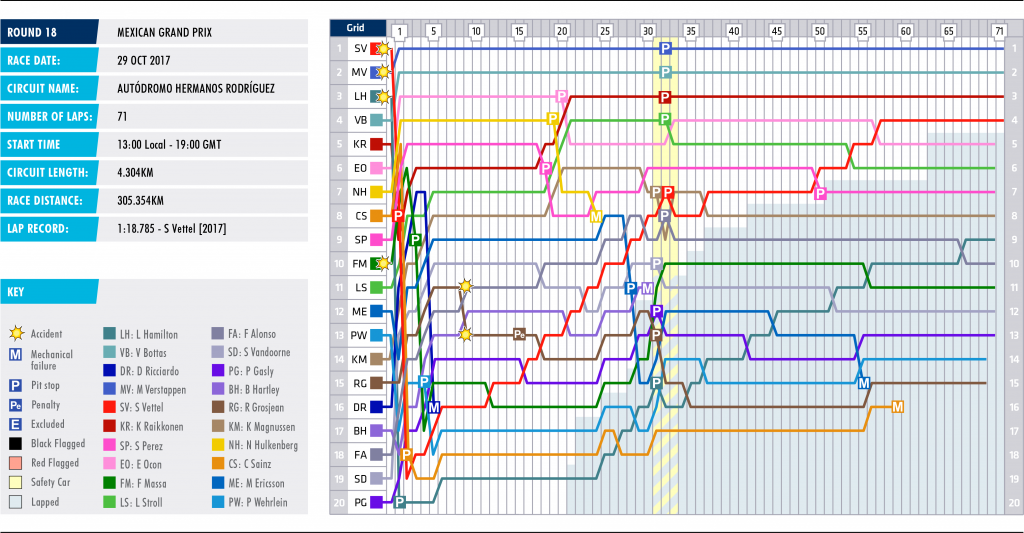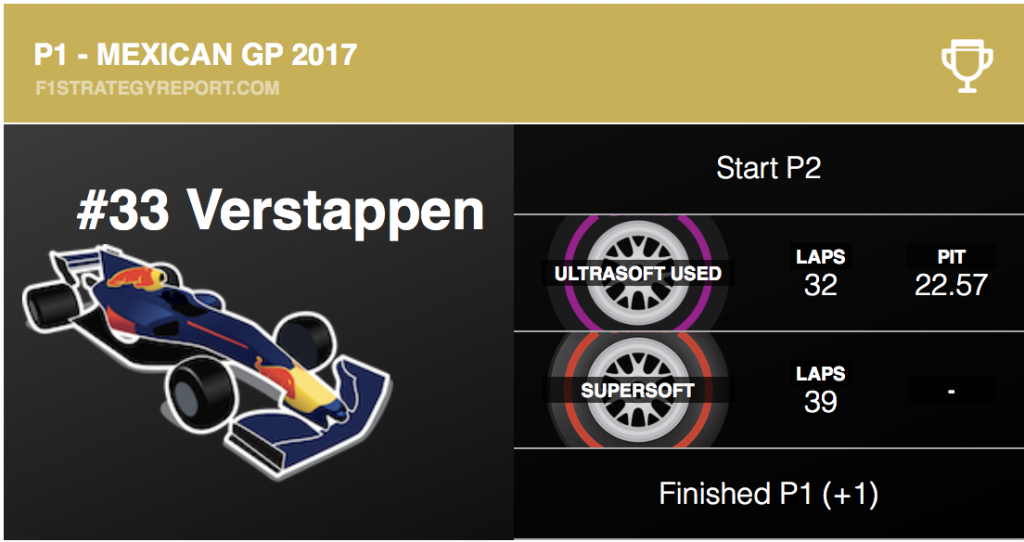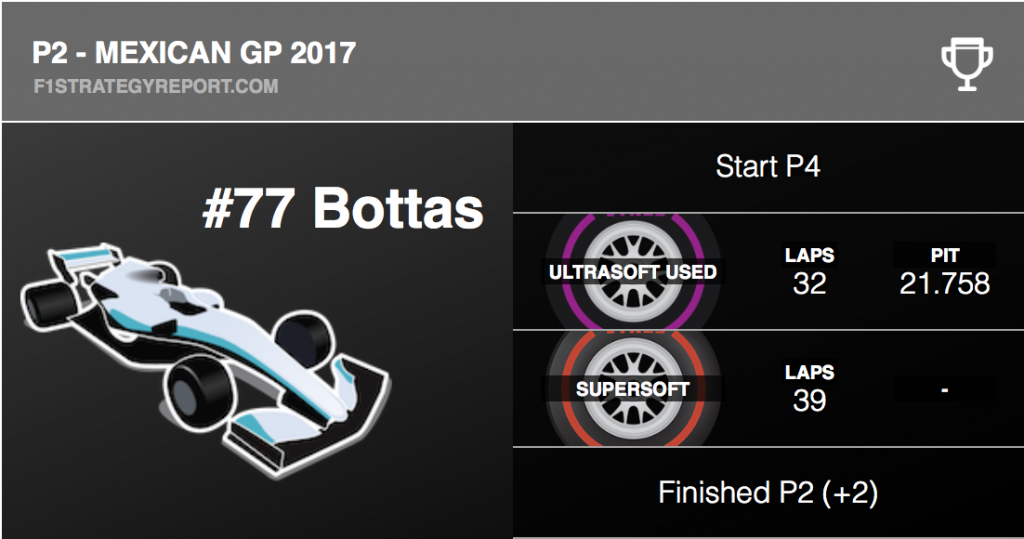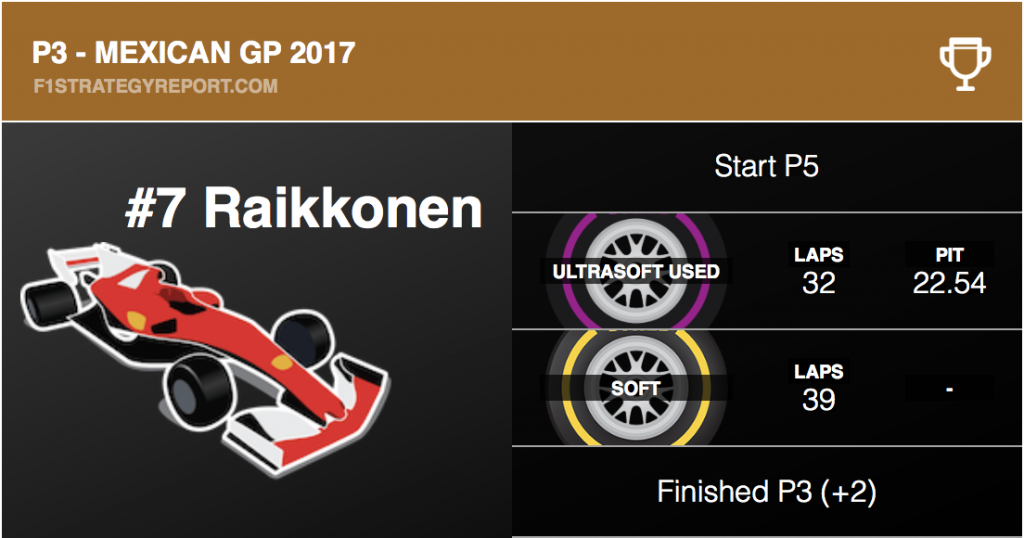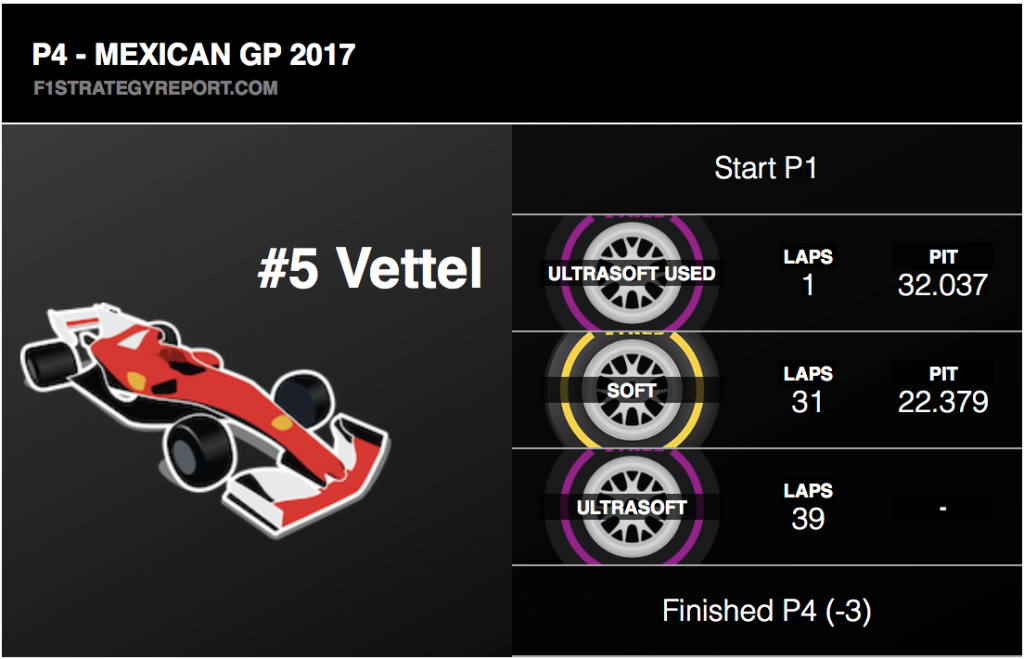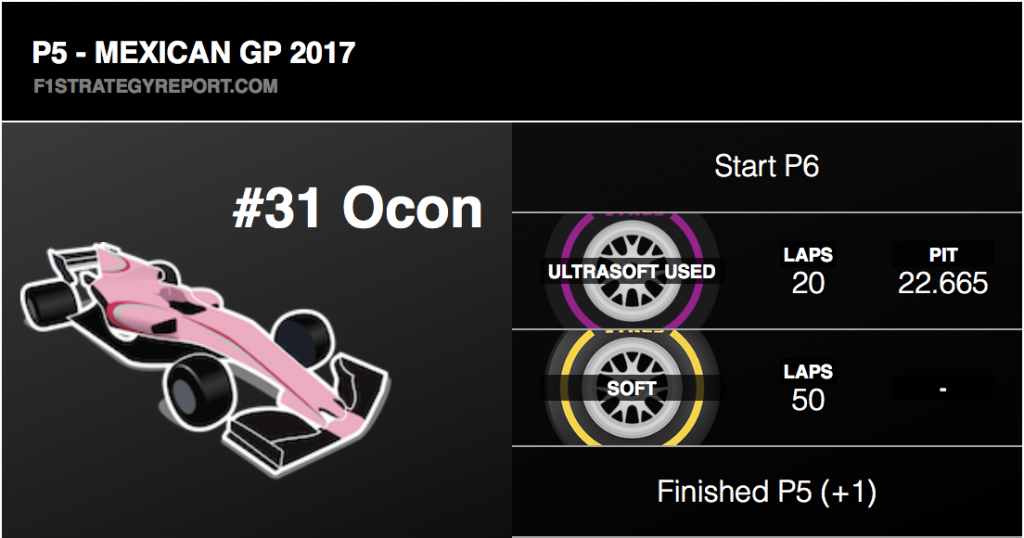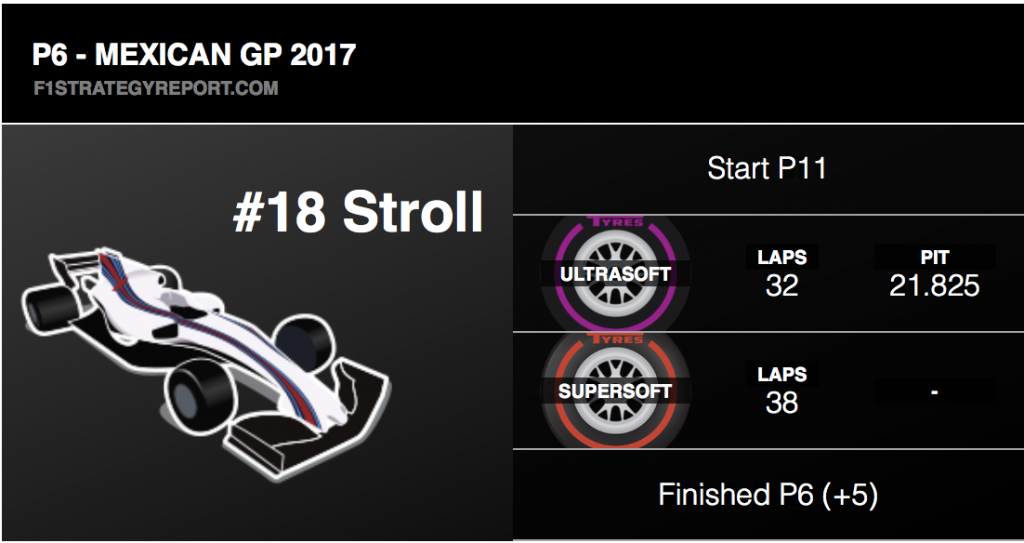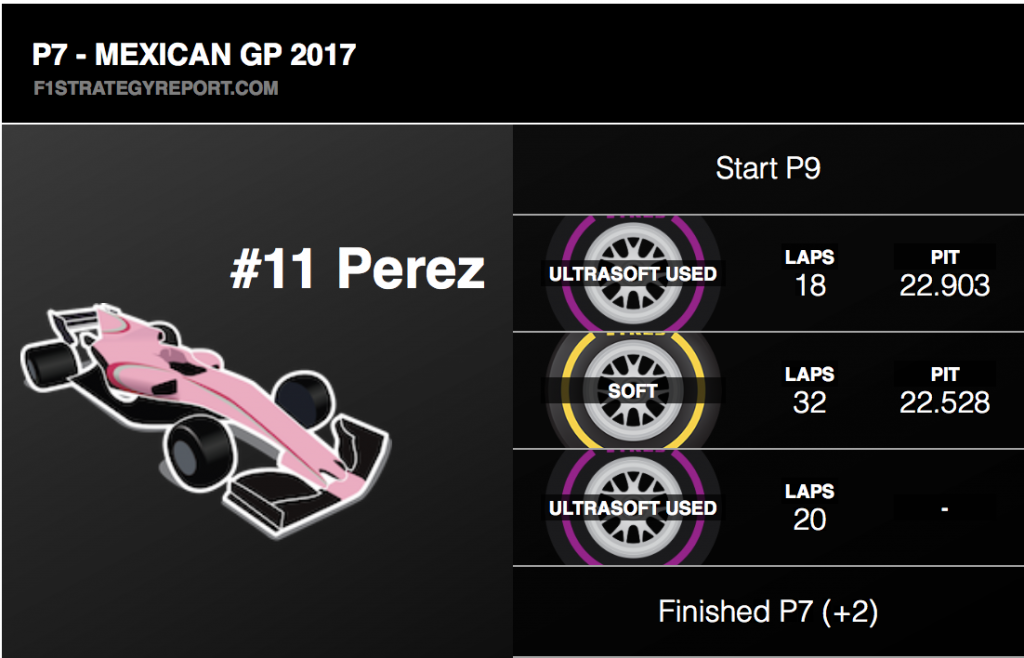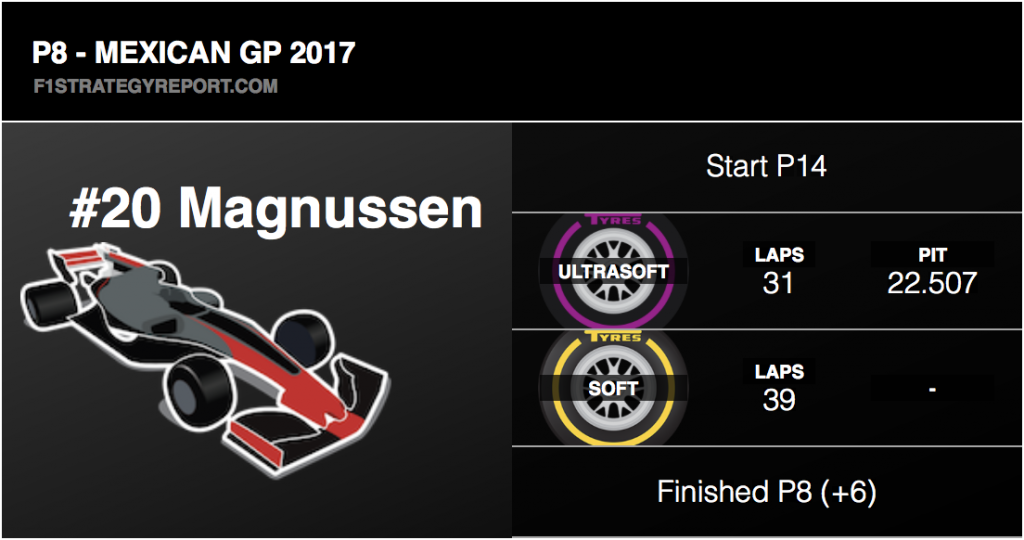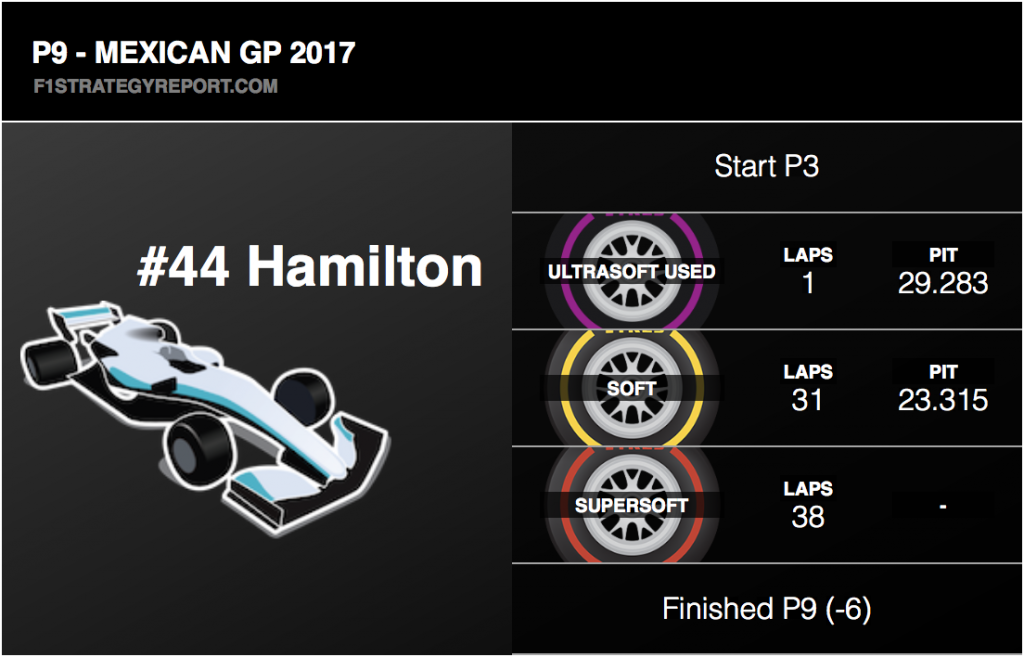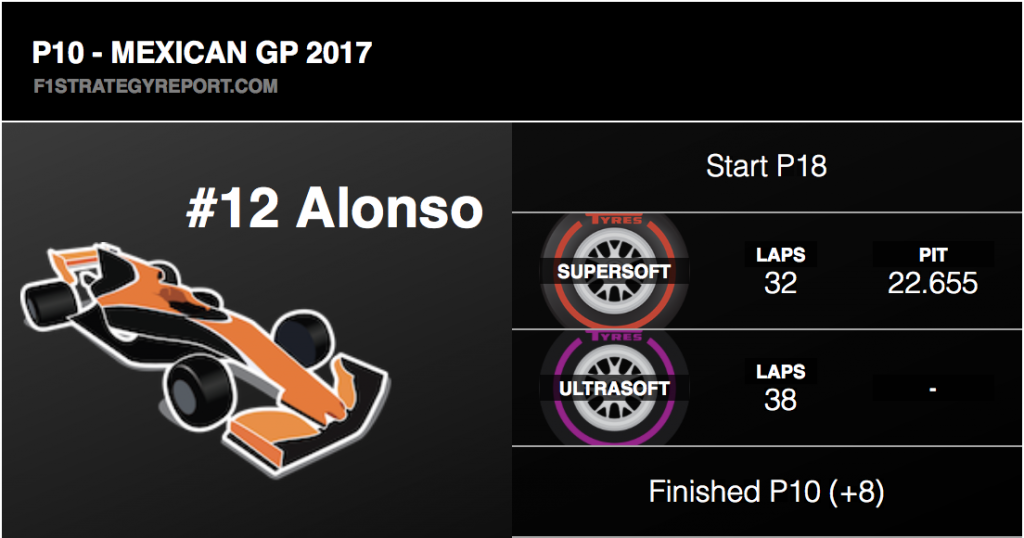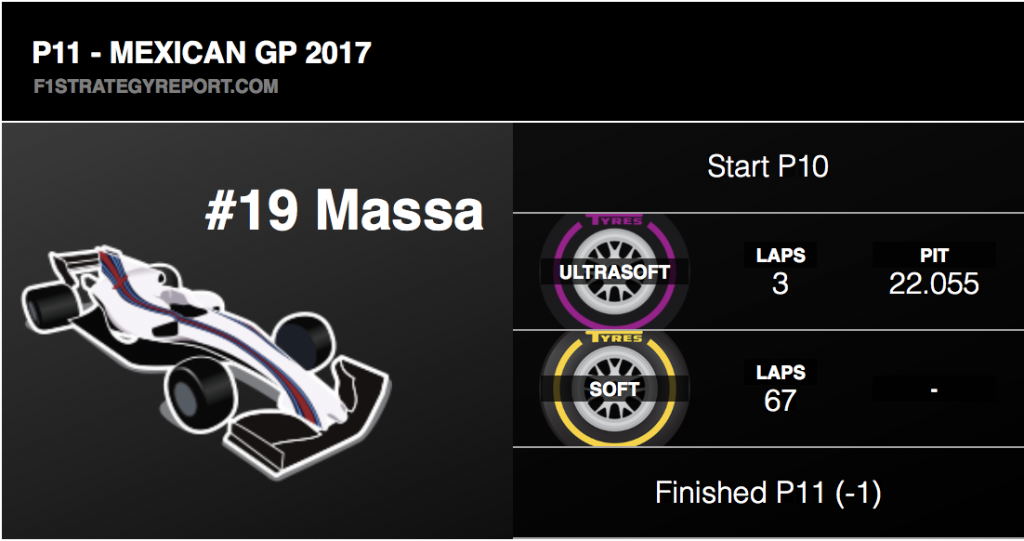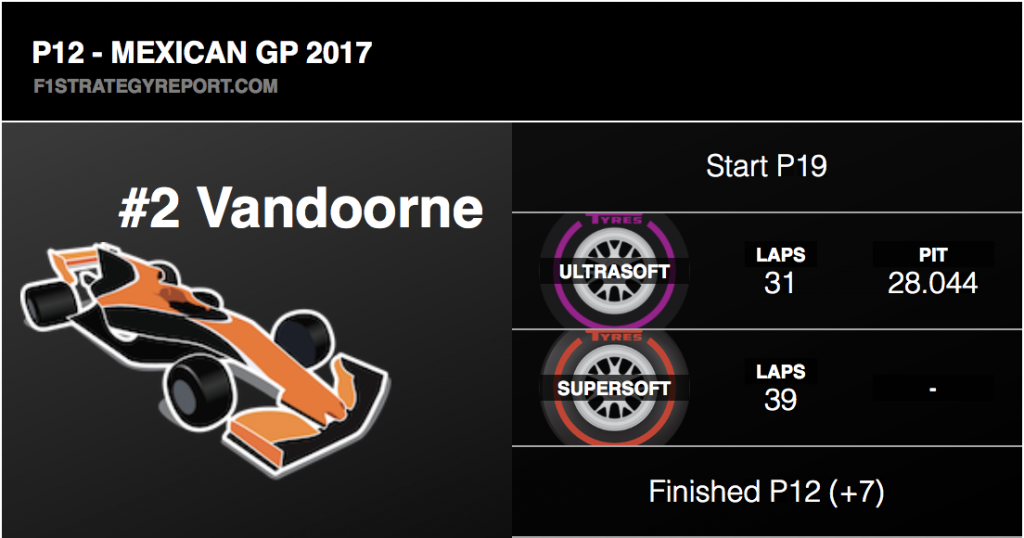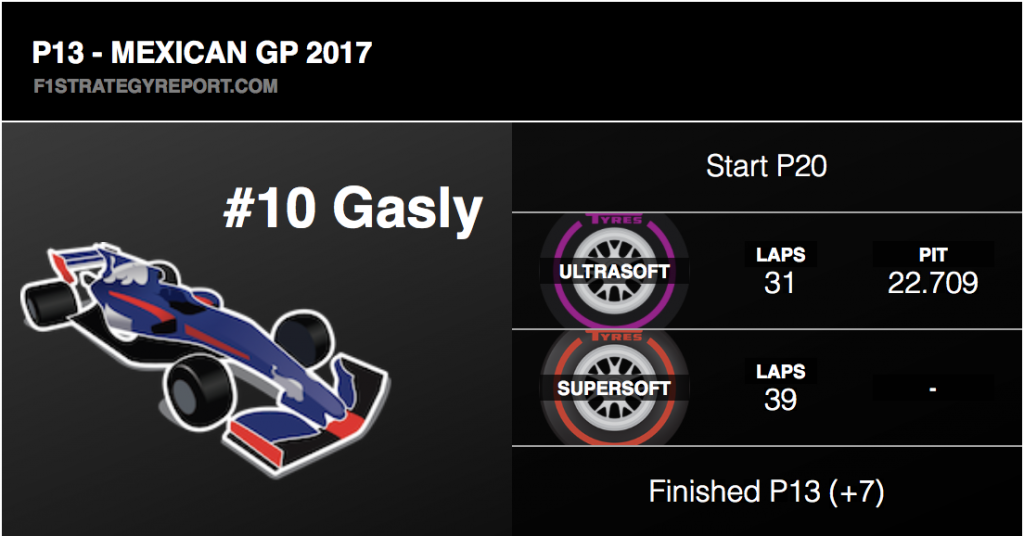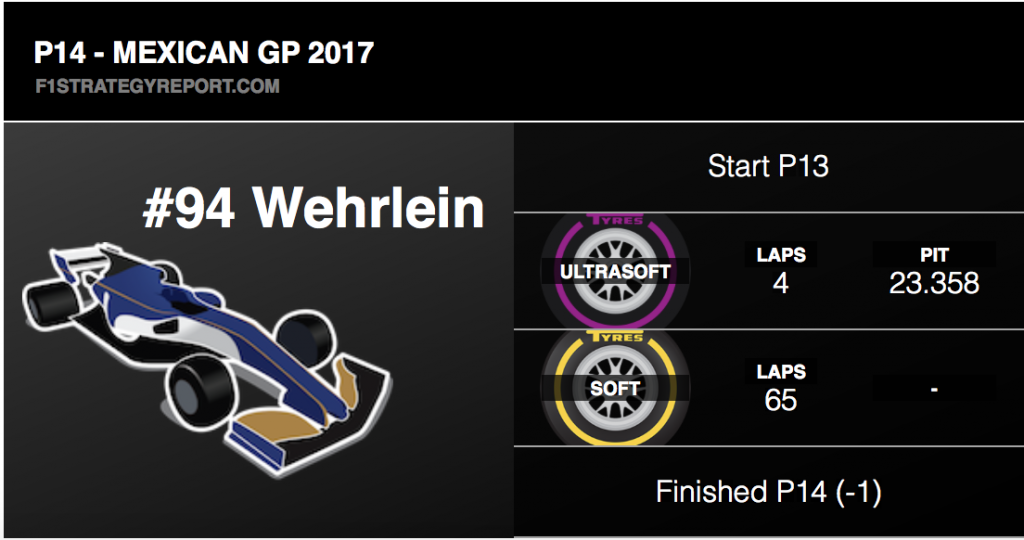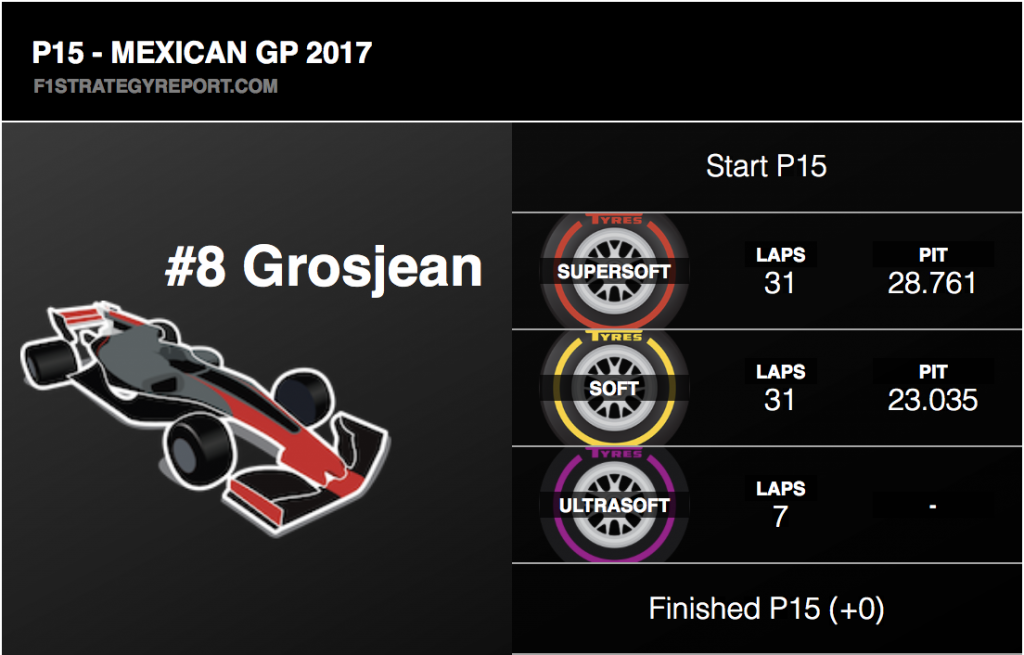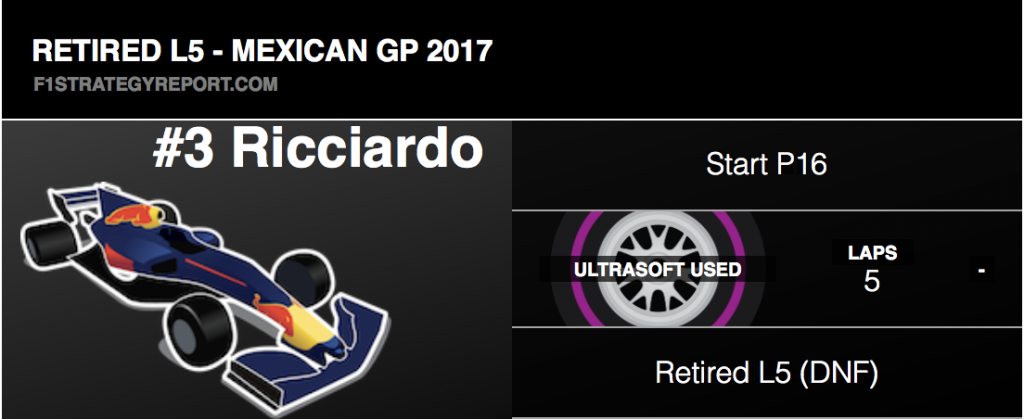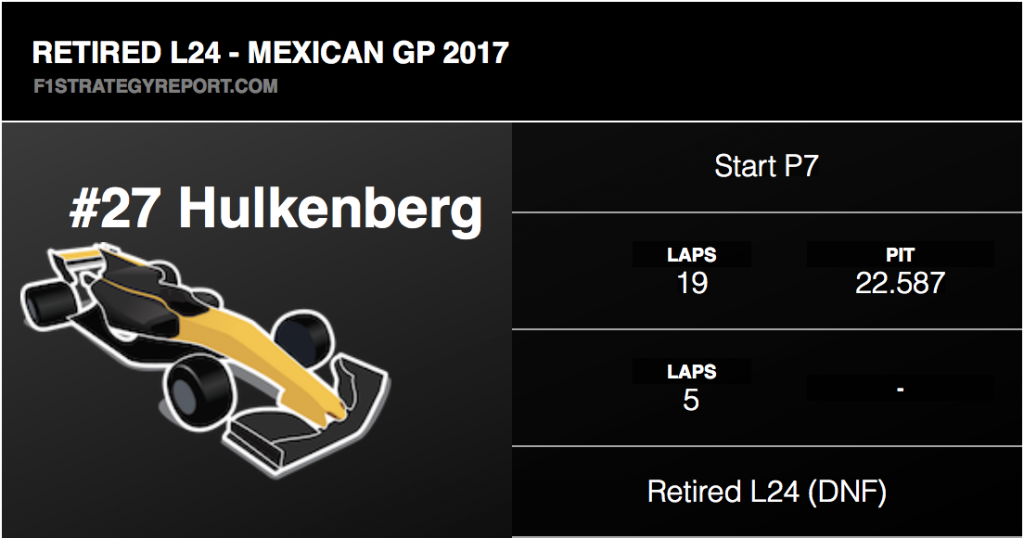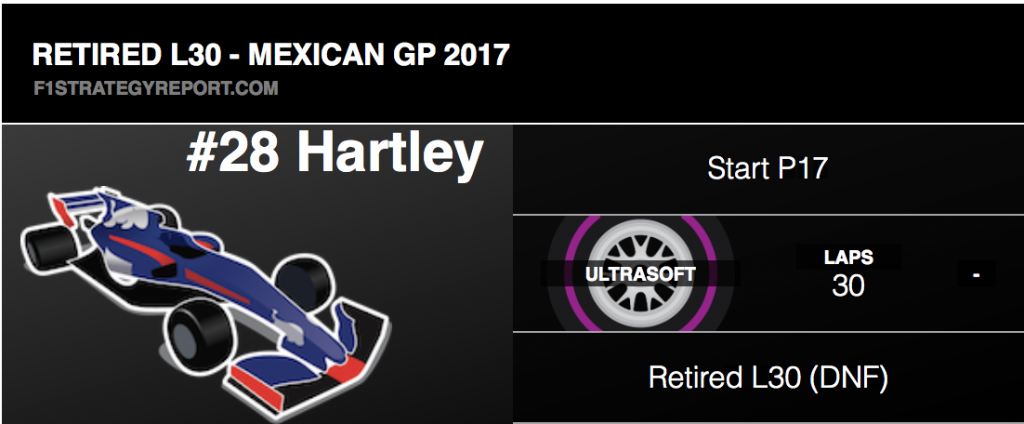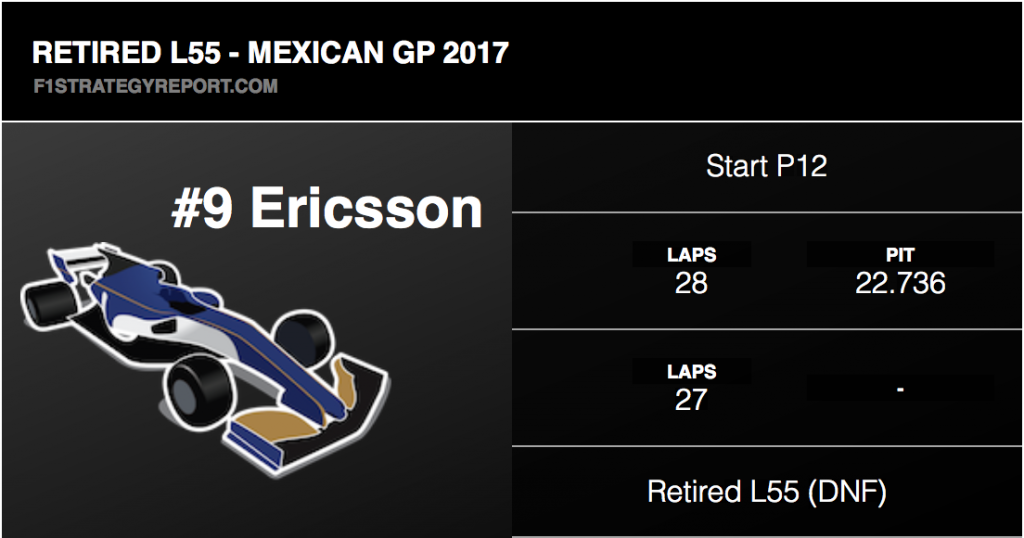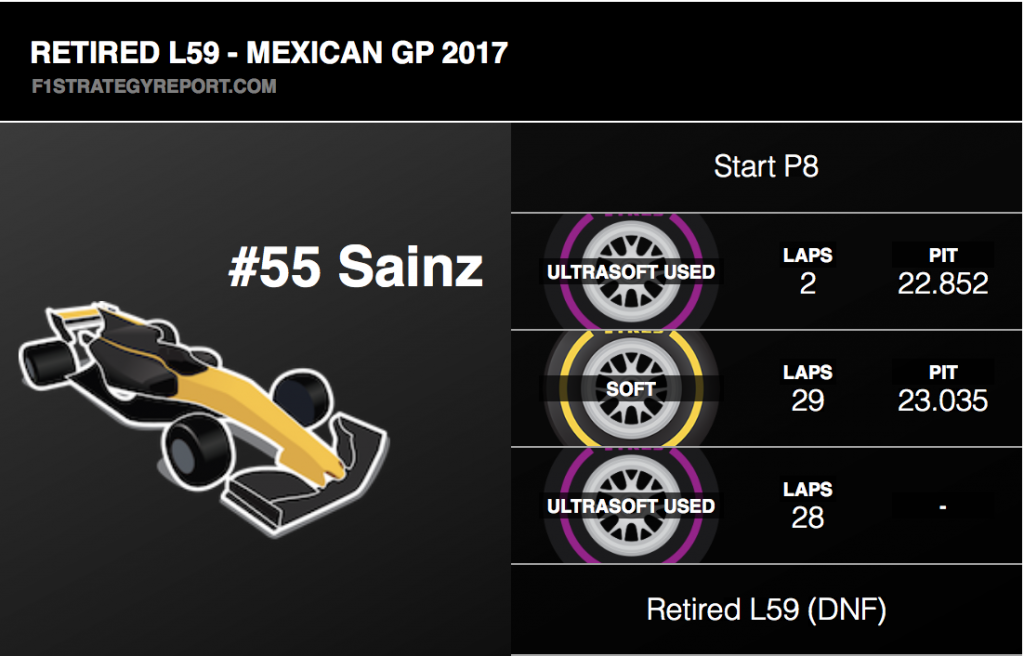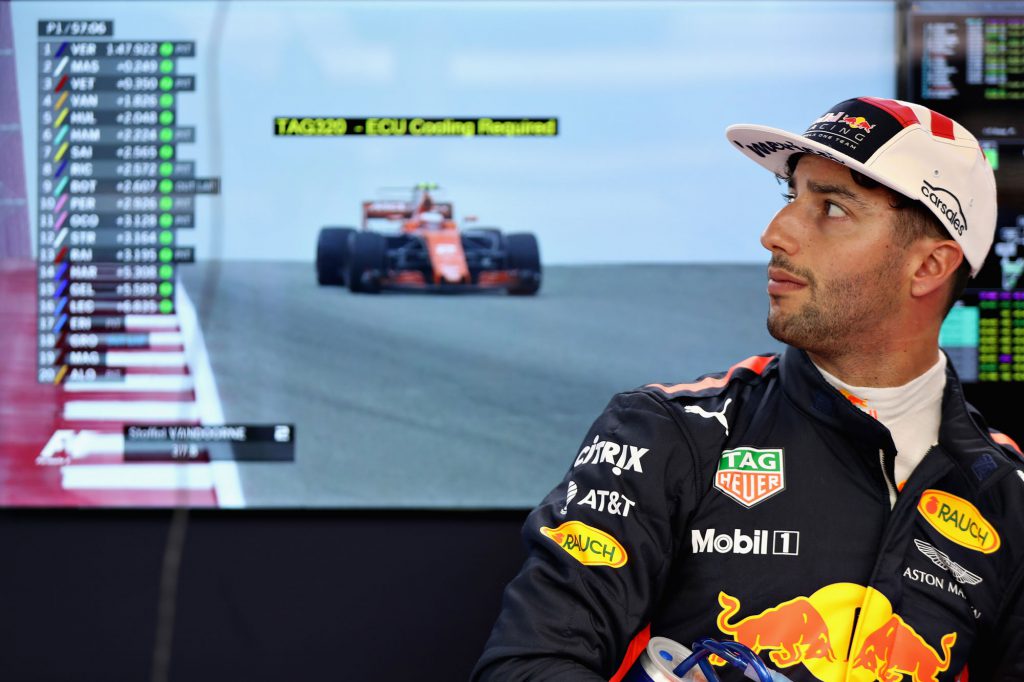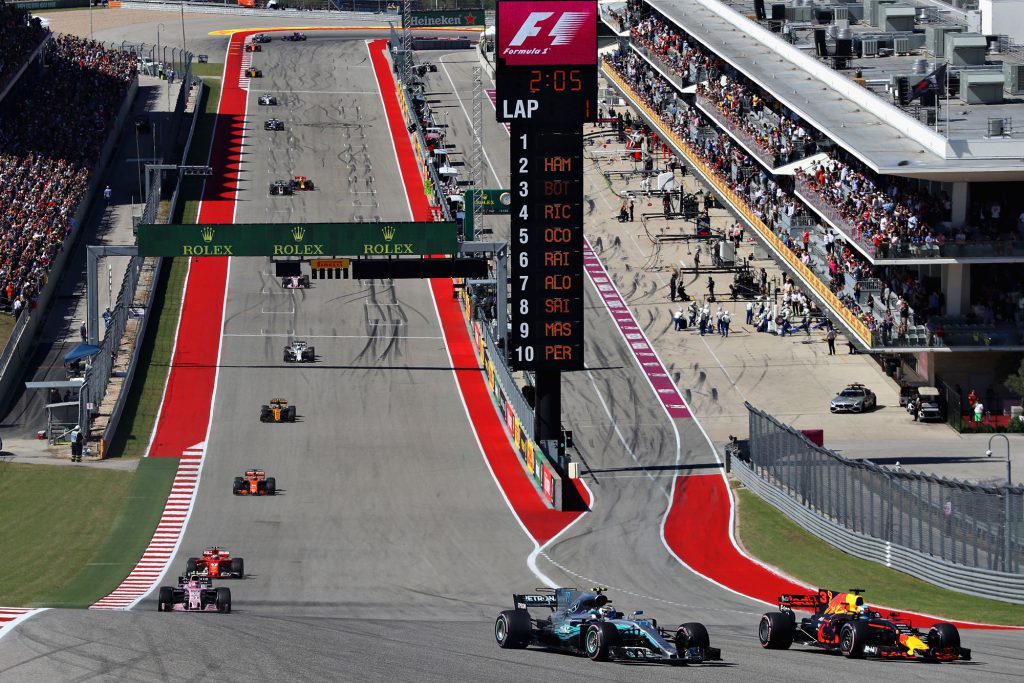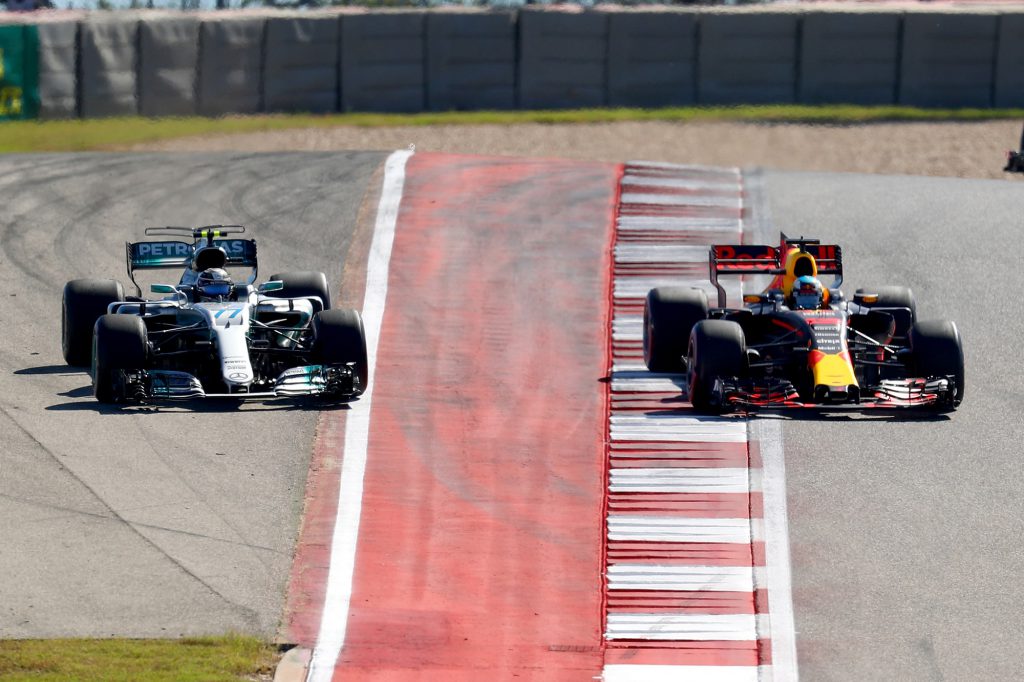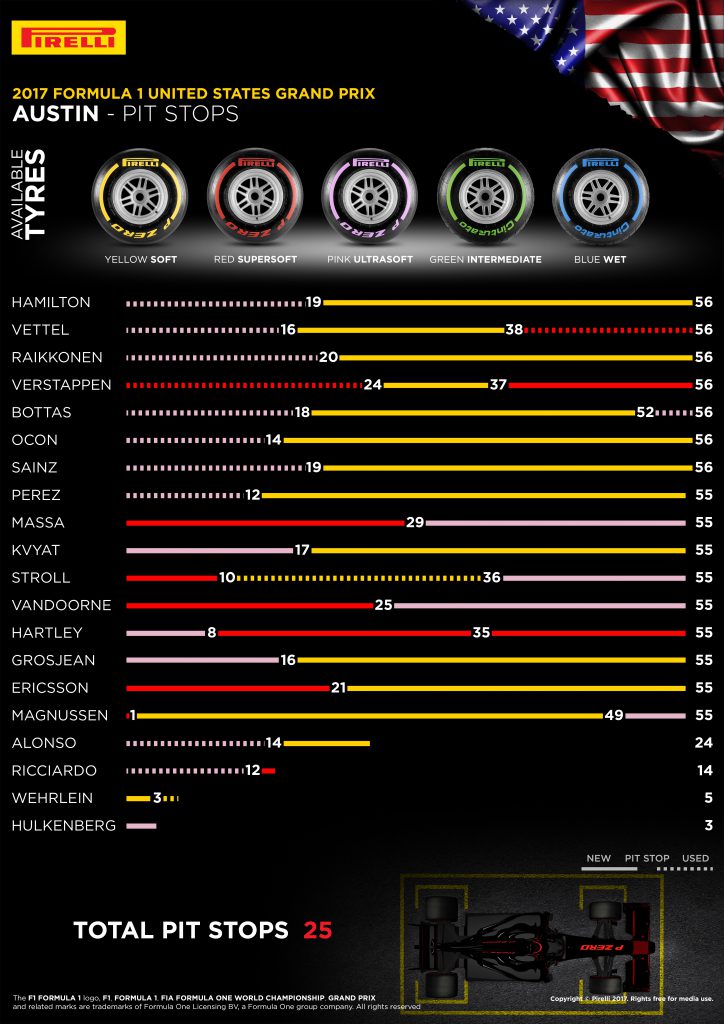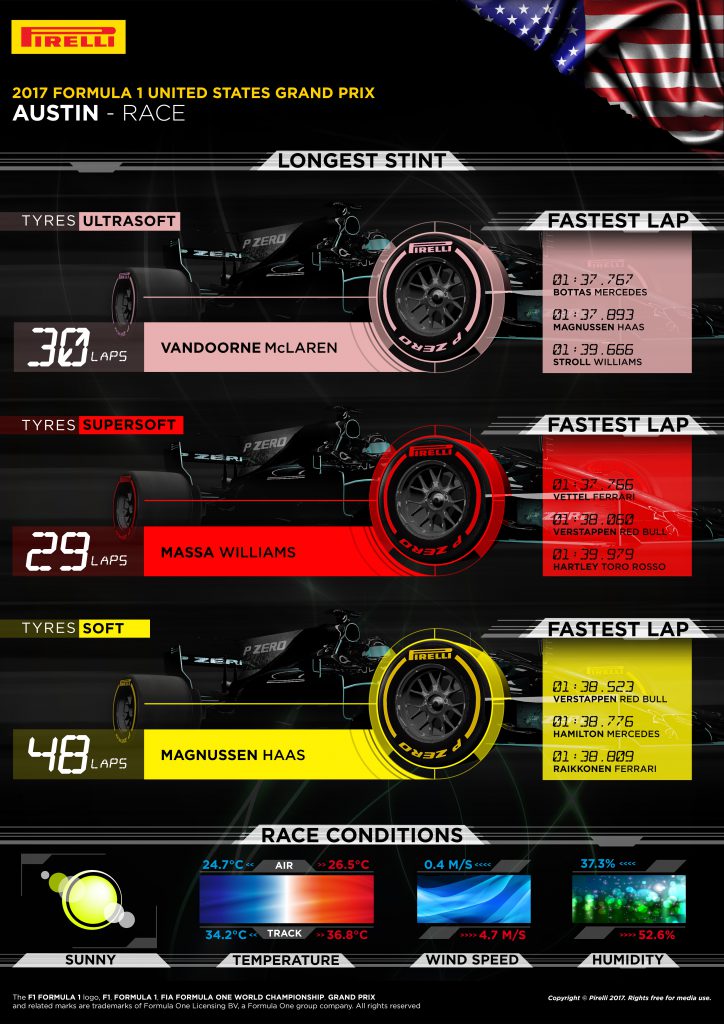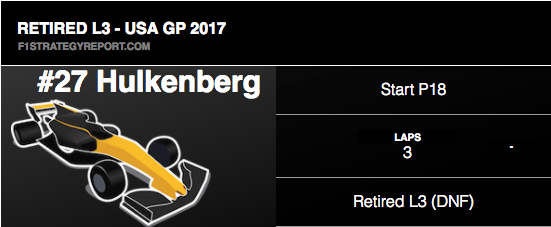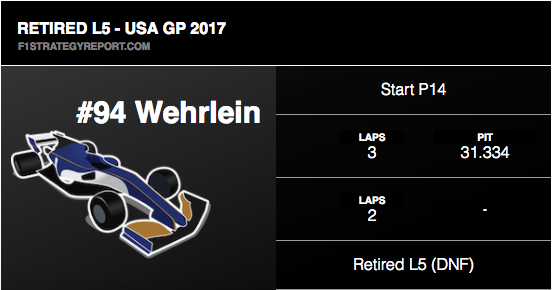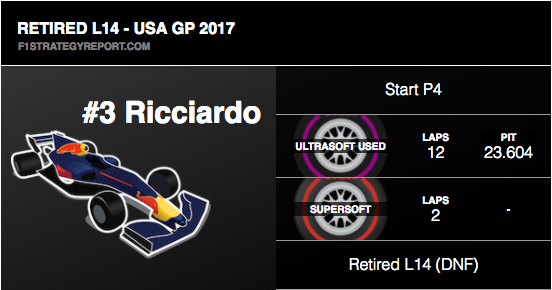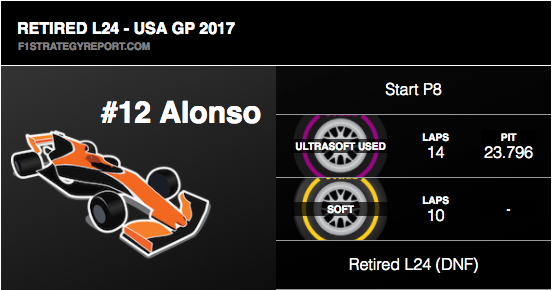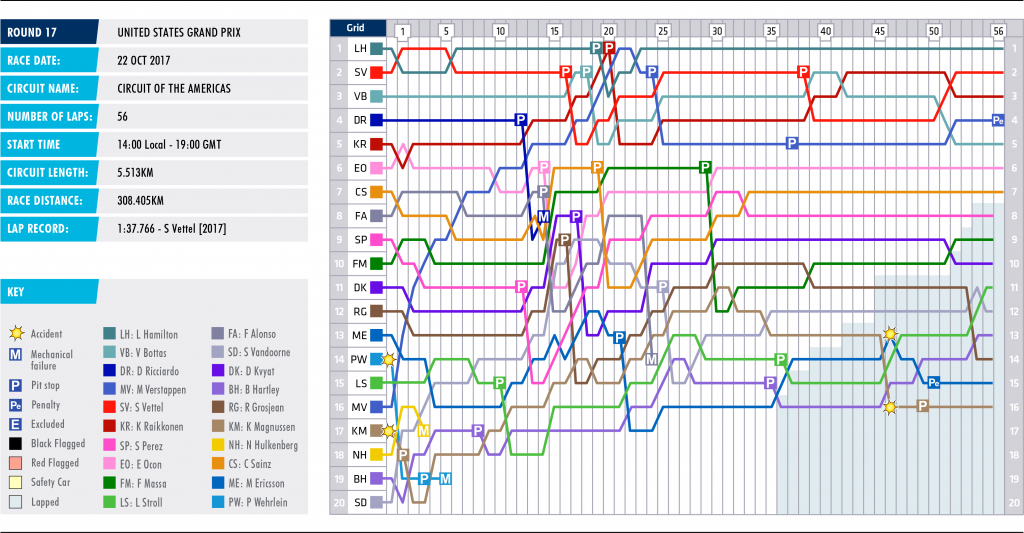Mexican Grand Prix 2017
31 Oct 2017
Race 18 – 71 Laps – 4.304km per lap – 305.354km race distance – low tyre wear
Mexican GP F1 Strategy Report Podcast – our host Michael Lamonato is joined by Terry Saunders from For F1’s Sake
THE OUTLOOK
The 2017 Mexican Grand Prix decided the drivers championship in Lewis Hamilton’s favour, but it was far from the straightforward affair the permutations predicted before the race.
With a 66-point lead Hamilton needed only to finish fifth if Vettel won from pole or ninth if Vettel finished second, but a first-lap tangle between the two protagonists sent both hurtling down the order. Though the Ferrari demonstrated blistering pace in its recovery, it wasn’t enough to score the necessary points to take the championship one more round.
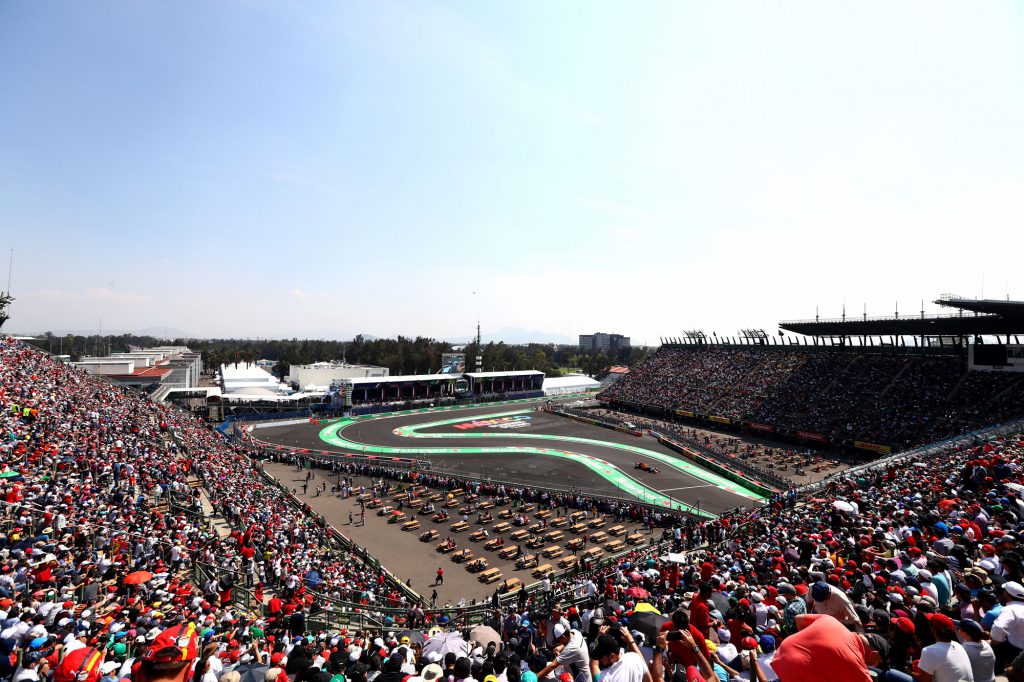
PRE-RACE EXPECTATIONS
Had you played a drinking game for the number of times TV commentators referenced the thinness of the air at the altitude of Mexico City (approximately 23 per cent less oxygen at 2250 metres above sea level, for the record), you’d have been well cooked by the end of the race. That said, the lack of atmospheric pressure does have a bearing on the race.
In thinner air the turbocharger must work harder to keep the engine generating the same amount of power, and this task is made even more difficult because the lack of air mass makes cooling more difficult.
Further, despite the Autódromo Hermanos Rodríguez being a power circuit, cars are configured for maximum downforce because so little aerodynamic performance can be scavenged in the thin air — and even then drivers still complain of poor grip.
Ferrari and Red Bull Racing were tipped to do well given their preference for high downforce tracks, and practice and qualifying proved this the case, putting Mercedes on the back foot.
This track is extremely easy on the tyres. The soft had endurance to last the entire race, and the ultrasoft and supersoft compounds could easily reach half distance.
THE RACE
First-lap chaos forces strategy calls
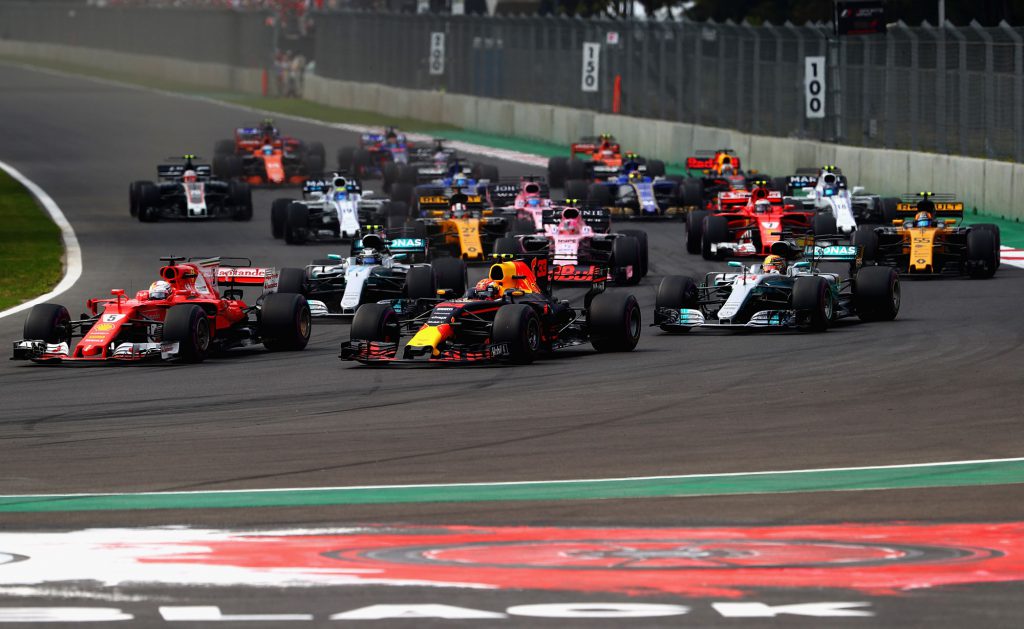
The first-lap melee decided the complexion of the race. By lap four Hamilton, Vettel, Sainz and Massa had all stopped with various damaged parts, setting themselves up for compromised one-stop races by switching to the soft tyre. Pascal Wehrlein also made an early switch — a favourite tactic of Sauber’s to attempt to finish the race with a ‘no-stop’ strategy.
The lack of tyre degradation meant both Massa and Wehrlein were able to finish the race without pitting behind the VSC, which earnt them three and two places respectively by the end of the race.
Vettel and Hamilton, however — as we’ve learnt this season from numerous back-of-the-field recoveries — have the pace to essentially run their own races and still pass the midfield, so both switched behind the VSC. Vettel took new ultrasofts, but Hamilton had only a new set of supersofts available, taking the red-marked tyres instead.
For Vettel this was the optimum outcome — he lost no positions after his pit stop and continued his climb afterwards, setting the fastest lap in the process. Hamilton likewise befitted from the stop, moving from 16th to ninth in the final stint.
Elsewhere, Räikkönen suffered a poor start, losing positions to both Force India cars and to Nico Hülkenberg. He recovered them only when the Renault retired and Esteban Ocon and Sergio Perez made early pit stops.
Inversely, Ricciardo and Magnussen both made sizzling starts, making up nine and five places respectively in the opening four laps. Ricciardo’s ultimate pace will remain a mystery, however, after he retired on lap five, but at least Magnussen converted his start into points.
Overtaking difficult due to altitude
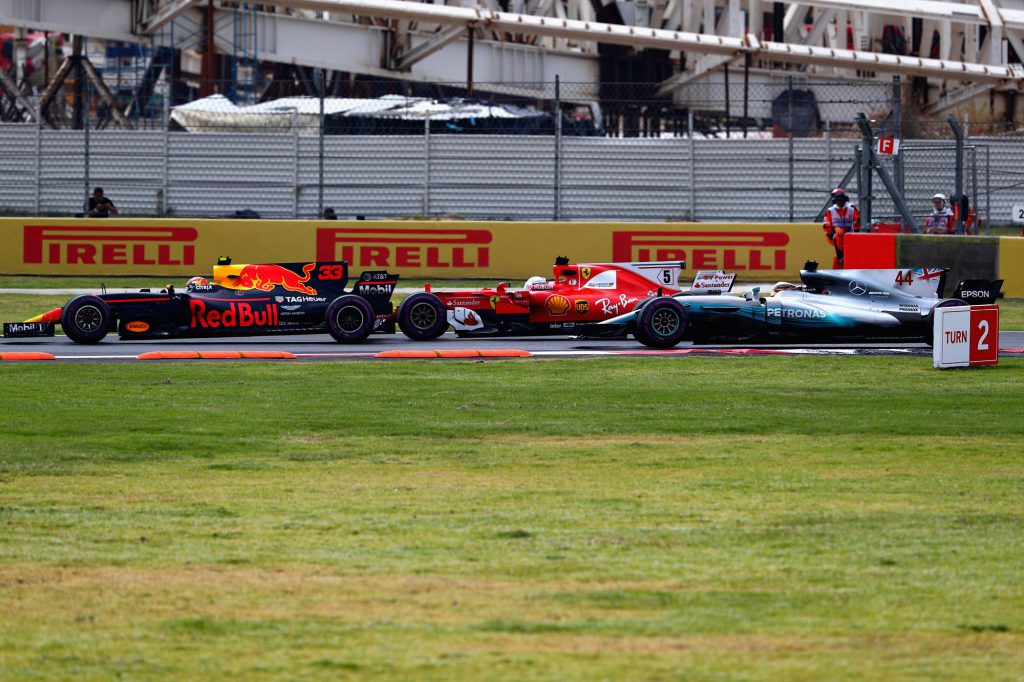
Managing an overheating car was a critical part of the race — Red Bull Racing was constantly warning Max Verstappen against pushing for the fastest lap, a command the Dutchman cheekily refused — and this undoubtedly contributed to Renault’s three in-race power unit failures.
Hamilton’s struggles in the first stint of the race were also testament to this. On the hardest tyre and with a damaged diffuser he didn’t have the pace to make a pass on Carlos Sainz — following another car always robs a driver of downforce, and on a circuit where downforce is at a premium, Lewis found himself stuck without any pace differentiator.
VSC was decisive for early gamblers
The lap-31 virtual safety car, triggered by Brendon Hartley’s smoky Toro Rosso, was the decisive strategic element in this race. For some — in particular those who stopped in the opening laps — it paid off, allowing them to gain places while their nearby rivals stopped.
However, Force India found the VSC poorly timed.
Sergio Perez and Esteban Ocon had stopped from fifth and third on laps 18 and 20 respectively in an effort to make it to the end, but because they were the only ones to do so — other than Nico Hülkenberg, who retired shortly after his stop — they lost their shot at competing with Kimi Räikkönen for the podium.
Instead Ocon finished fifth behind Vettel and Perez came home two places further back, the duo separated by Williams’s Lance Stroll
Stroll, on his 19th birthday, benefitted greatly from the VSC. After moving up four places in the opening lap, Williams held its nerve, choosing not to pit the Canadian with his Renault and Force India rivals. He made up three places when they stopped and lost only one place, to Ocon, during his own stop under VSC.
Marcus Ericsson also lost out from the VSC, losing a top-10 place when he stopped three laps before Hartley’s retirement — but the Swede retired with an engine fire on lap 55, rendering the argument purely hypothetical.
McLaren fumble on points
McLaren had a mixed day despite fielding a surprisingly competitive car — Fernando Alonso put the performance down to the chassis, but the Honda power unit also looked relatively feisty.
Alonso’s supersoft-ultrasoft strategy way racy and delivered the goods with P10, but Stoffel Vandoorne missed a chance to back him up in P11 after a particularly slow pit stop — the Belgian was called in late due to the timing of the VSC and lost five seconds and a position to Felipe Massa as a result.
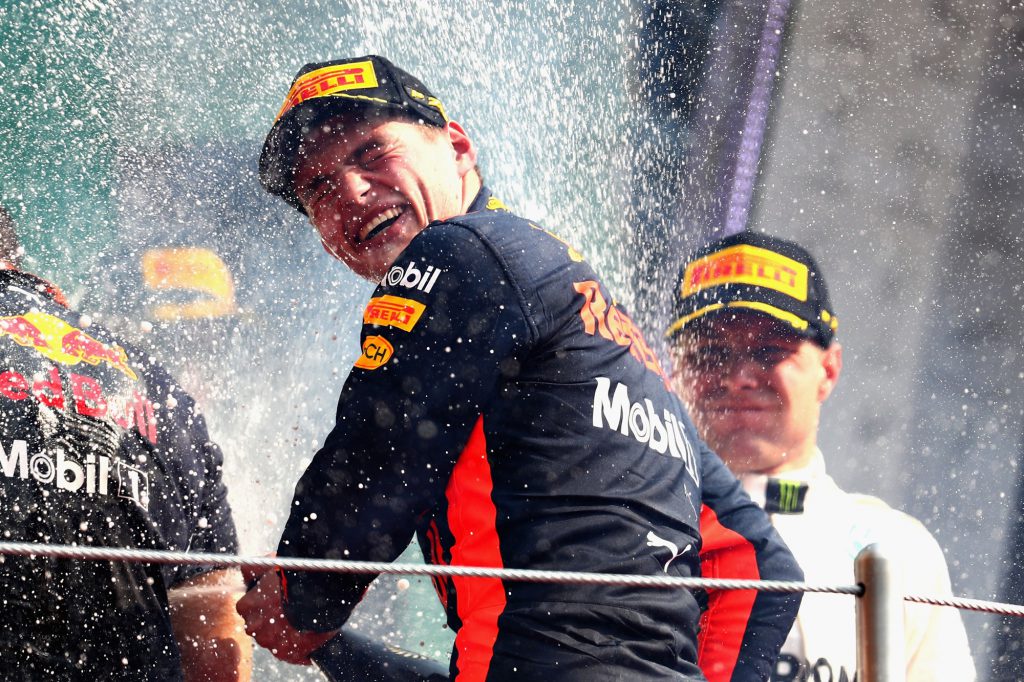
Michael Lamonato @MichaelLamonato
ESSENTIAL STATS
Pole position: Max Verstappen, Red Bull Racing
Winner: Max Verstappen, Red Bull Racing
Strategy: One-stop — Ultrasoft – Supersoft
Fastest lap: Sebastian Vettel, Ferrari — 1:18.785 (lap record)
RACE DATA
Thanks to Pirelli Motorsport
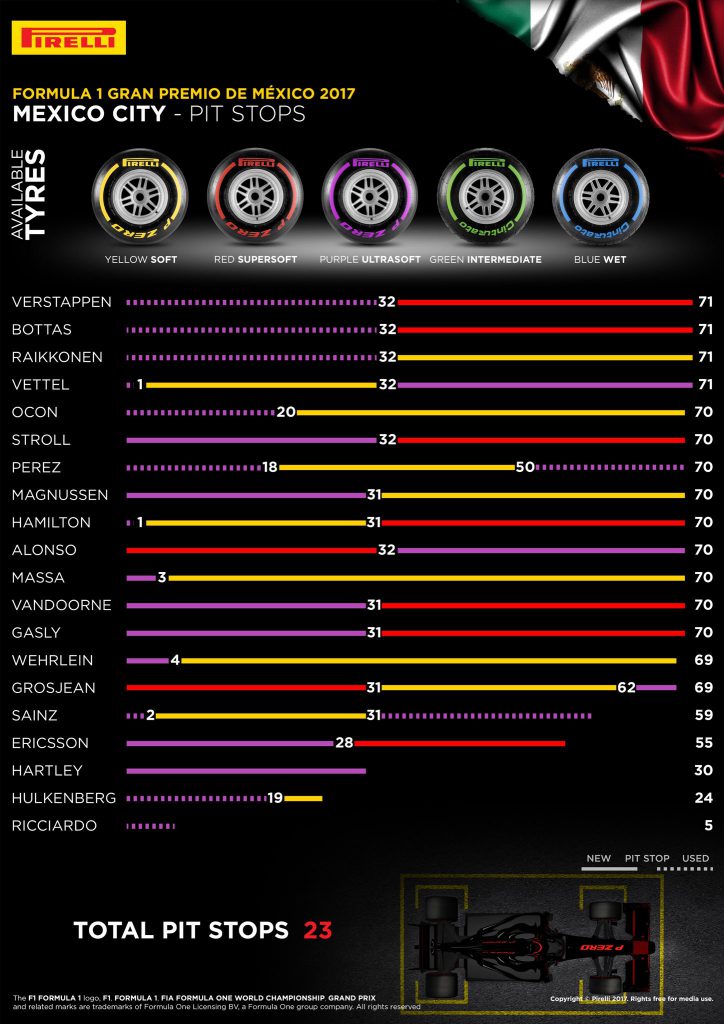
STINTS BY DRIVER
